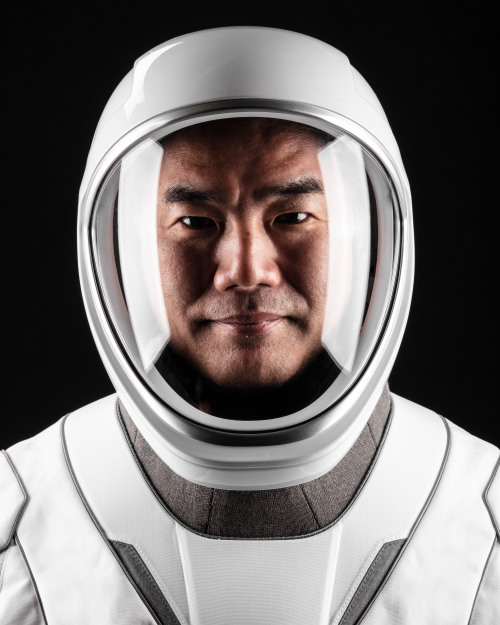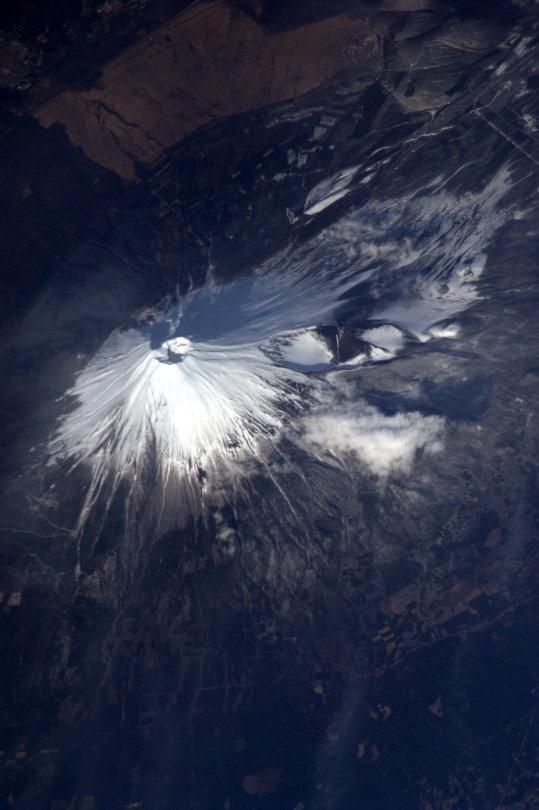Hello!! Its Wonderful To Be Able To Ask Questions, Thank You!
Hello!! Its wonderful to be able to ask questions, thank you!
About Perseverance, does it have a self-repair option? And as Curiosity is still operational, will they run missions together? Or will they split up to cover more distance?
Is this a sign that we're close to being able to set foot on Mars?
My final question is how do you receive the messages from such a long distance?
Thanks for all your hard work! 加油/Good luck!
“Is this a sign that we are close to being able to set foot on Mars?”
More Posts from Science-child and Others
Meet the Artemis Team Returning Humans to the Moon
We. Are. Going 🌙
Today, we introduced the eighteen NASA Astronauts forming the Artemis team. Together, they’ll use their diverse range of backgrounds, expertise, and experience to pave the way for humans to return to the Moon, to stay.
Meet the heroes of the future who’ll carry us back to the Moon and beyond - the Artemis generation.
Joe Acaba

Fun fact: Joe is a veteran of the U.S. Peace Corps! Get to know Joe personally with this video –> Watch HERE.
Kayla Barron

Fun fact: Kayla got her start in public service through serving in the U.S. Navy. Get to know Kayla personally with this video –> Watch HERE.
Raja Chari

Fun fact: Raja’s nickname is “Grinder,” and he comes from a test pilot background. Get to know Raja personally with this video –> Watch HERE.
Jessica Watkins

Fun fact: Jessica is a rugby national champion winner and geologist. Get to know Jessica personally with this video –> Watch HERE.
Matthew Dominick

Fun fact: Matthew sums himself up as a father, a husband and an explorer. Get to know Matthew personally with this video –> Watch HERE.
Jasmin Moghbeli

Fun fact: Jasmin says she still wakes up every morning and it feels like a “pinch me moment” to think she’s actually an astronaut right now. Get to know Jasmin personally with this video –> Watch HERE.
Victor Glover

Fun fact: Victor’s dream is to work on the surface of the Moon. Get to know Victor personally with this video –> Watch HERE.
Jessica Meir

Fun fact: Jessica was five years old when she knew she wanted to be an astronaut. Get to know Jessica personally with this video –> Watch HERE.
Woody Hoburg

Fun fact: Woody used to spend summers away from graduate school working search and rescue in Yosemite National Park. Get to know Woody personally with this video –> Watch HERE.
Anne McClain

Fun fact: Anne is a West Point alumni who describes herself as an impractical dreamer. Get to know Anne personally with this video –> Watch HERE.
Jonny Kim

Fun fact: Jonny is also a U.S. Navy SEAL with a medical degree from Harvard. Get to know Jonny personally with this video –> Watch HERE.
Nicole Mann

Fun fact: Nicole is a U.S. Lieutenant Colonel in the Marine Corps! Get to know Nicole personally with this video –> Watch HERE.
Kjell Lindgren

Fun fact: Kjell was a flight surgeon, a physician who takes care of astronauts, before applying to be an astronaut himself! Get to know Kjell personally with this video –> Watch HERE.
Christina Koch

Fun fact: Christina set a record for the longest single spaceflight by a woman with a total of 328 days in space. Get to know Christina personally with this video –> Watch HERE.
Frank Rubio

Fun fact: Frank was a Black Hawk helicopter pilot in the U.S. Army and family medical physician. Get to know Frank personally with this video –> Watch HERE.
Stephanie Wilson

Fun fact: Stephanie was the voice in Mission Control leading our NASA Astronauts for the all-woman spacewalk last year. Get to know Stephanie personally with this video –> Watch HERE.
Scott Tingle

Fun fact: Scott said he wanted to be an astronaut in a high school class and the students laughed – look at him now. Get to know Scott personally with this video –> Watch HERE.
Kate Rubins

Fun fact: Kate is actually IN space right now, so she will have to get her official portrait when she comes home! She is also the first person to sequence DNA in space. Get to know Kate personally with this video –> Watch HERE. Stay up to date with our Artemis program and return to the Moon by following NASA Artemis on Twitter, Facebook and Instagram.
Make sure to follow us on Tumblr for your regular dose of space: http://nasa.tumblr.com.
Decoding Nebulae
We can agree that nebulae are some of the most majestic-looking objects in the universe. But what are they exactly? Nebulae are giant clouds of gas and dust in space. They’re commonly associated with two parts of the life cycle of stars: First, they can be nurseries forming new baby stars. Second, expanding clouds of gas and dust can mark where stars have died.

Not all nebulae are alike, and their different appearances tell us what's happening around them. Since not all nebulae emit light of their own, there are different ways that the clouds of gas and dust reveal themselves. Some nebulae scatter the light of stars hiding in or near them. These are called reflection nebulae and are a bit like seeing a street lamp illuminate the fog around it.

In another type, called emission nebulae, stars heat up the clouds of gas, whose chemicals respond by glowing in different colors. Think of it like a neon sign hanging in a shop window!

Finally there are nebulae with dust so thick that we’re unable to see the visible light from young stars shine through it. These are called dark nebulae.

Our missions help us see nebulae and identify the different elements that oftentimes light them up.
The Hubble Space Telescope is able to observe the cosmos in multiple wavelengths of light, ranging from ultraviolet, visible, and near-infrared. Hubble peered at the iconic Eagle Nebula in visible and infrared light, revealing these grand spires of dust and countless stars within and around them.

The Chandra X-ray Observatory studies the universe in X-ray light! The spacecraft is helping scientists see features within nebulae that might otherwise be hidden by gas and dust when viewed in longer wavelengths like visible and infrared light. In the Crab Nebula, Chandra sees high-energy X-rays from a pulsar (a type of rapidly spinning neutron star, which is the crushed, city-sized core of a star that exploded as a supernova).

The James Webb Space Telescope will primarily observe the infrared universe. With Webb, scientists will peer deep into clouds of dust and gas to study how stars and planetary systems form.

The Spitzer Space Telescope studied the cosmos for over 16 years before retiring in 2020. With the help of its detectors, Spitzer revealed unknown materials hiding in nebulae — like oddly-shaped molecules and soot-like materials, which were found in the California Nebula.

Studying nebulae helps scientists understand the life cycle of stars. Did you know our Sun got its start in a stellar nursery? Over 4.5 billion years ago, some gas and dust in a nebula clumped together due to gravity, and a baby Sun was born. The process to form a baby star itself can take a million years or more!

After billions more years, our Sun will eventually puff into a huge red giant star before leaving behind a beautiful planetary nebula (so-called because astronomers looking through early telescopes thought they resembled planets), along with a small, dense object called a white dwarf that will cool down very slowly. In fact, we don’t think the universe is old enough yet for any white dwarfs to have cooled down completely.
Since the Sun will live so much longer than us, scientists can't observe its whole life cycle directly ... but they can study tons of other stars and nebulae at different phases of their lives and draw conclusions about where our Sun came from and where it's headed. While studying nebulae, we’re seeing the past, present, and future of our Sun and trillions of others like it in the cosmos.

To keep up with the most recent cosmic news, follow NASA Universe on Twitter and Facebook.
Make sure to follow us on Tumblr for your regular dose of space.

Got a question about black holes? Let’s get to the bottom of these odd phenomena. Ask our black hole expert anything!
Black holes are mystifying yet terrifying cosmic phenomena. Unfortunately, people have a lot of ideas about them that are more science fiction than science. Don’t worry! Our black hole expert, Jeremy Schnittman, will be answering your your questions in an Answer Time session on Wednesday, October 2 from 3pm - 4 pm ET here on NASA’s Tumblr! Make sure to ask your question now by visiting http://nasa.tumblr.com/ask!
Jeremy joined the Astrophysics Science Division at our Goddard Space Flight Center in 2010 following postdoctoral fellowships at the University of Maryland and Johns Hopkins University. His research interests include theoretical and computational modeling of black hole accretion flows, X-ray polarimetry, black hole binaries, gravitational wave sources, gravitational microlensing, dark matter annihilation, planetary dynamics, resonance dynamics and exoplanet atmospheres. He has been described as a “general-purpose astrophysics theorist,” which he regards as quite a compliment.

Fun Fact: The computer code Jeremy used to make the black hole animations we featured last week is called “Pandurata,” after a species of black orchid from Sumatra. The name pays homage to the laser fusion lab at the University of Rochester where Jeremy worked as a high school student and wrote his first computer code, “Buttercup.” All the simulation codes at the lab are named after flowers.
Make sure to follow us on Tumblr for your regular dose of space: http://nasa.tumblr.com
Will the robot be able to send vedio footage?







hey everyone! i’m a peer tutor at my university and i wanted to share some study strategies that i’ve found really helpful in my stem/content-heavy courses. please feel free to share yours with me as well!
(image descriptions under the cut)
Keep reading
what is the biggest challenge in the preparation of such a mission and how do you handle it?
Roman’s Heat-Vision Eyes Are Complete!

Our Nancy Grace Roman Space Telescope team recently flight-certified all 24 of the detectors the mission needs. When Roman launches in the mid-2020s, the detectors will convert starlight into electrical signals, which will then be decoded into 300-megapixel images of huge patches of the sky. These images will help astronomers explore all kinds of things, from rogue planets and black holes to dark matter and dark energy.

Eighteen of the detectors will be used in Roman’s camera, while another six will be reserved as backups. Each detector has 16 million tiny pixels, so Roman’s images will be super sharp, like Hubble’s.

The image above shows one of Roman’s detectors compared to an entire cell phone camera, which looks tiny by comparison. The best modern cell phone cameras can provide around 12-megapixel images. Since Roman will have 18 detectors that have 16 million pixels each, the mission will capture 300-megapixel panoramas of space.
The combination of such crisp resolution and Roman’s huge view has never been possible on a space-based telescope before and will make the Nancy Grace Roman Space Telescope a powerful tool in the future.
Learn more about the Roman Space Telescope!
Make sure to follow us on Tumblr for your regular dose of space!

NASA Spotlight: Astronaut Soichi Noguchi
Soichi Noguchi was selected as an astronaut with the Japan Aerospace Exploration Agency in 1996. A native of Yokohama, Kanagawa, he is currently a mission specialist for NASA’s SpaceX Crew-1 launch taking flight to the International Space Station on Nov. 14. Soichi will be the first international crewmember on Crew Dragon and the first international partner astronaut to fly aboard three types of orbital spacecraft – the U.S. space shuttle, the Russian Soyuz, and now the SpaceX Crew Dragon! Talk about impressive. He received a B.S. in Aeronautical Engineering in 1989, master’s degree in Aeronautical Engineering in 1991, Doctor of Philosophy in Advanced Interdisciplinary Studies in 2020, all from the University of Tokyo.
Soichi took time from preparing for his historic mission to answer questions about his life and career:
You recently earned a doctorate in philosophy. What made you do it?
After my second flight, I started this research about your sensory system in zero gravity. I used a my own personal video, which I took during my last two flights at the International Space Station. I had a lot of interesting discussions amongst young professionals and students at the University of Tokyo about the research. It was a fun experience – but I would not do it again!
Space is a risky business. Why do it?
Space IS definitely a risky business. But the reward is higher than the risk so that’s why we take it.
Do you have a message for boys and girls in Japan who are interested in science and engineering?
Three words: Space. Is. Waiting.

Aside from mission objectives and tasks, what’s a personal goal for this mission?
We have a lot of interesting missions to do, but my personal goal is to return home with lots of fun stories.

What was it like to get the phone call to become an astronaut?
It was 25 years ago, but I still remember the voice vividly. I got a call from Dr. Mamoru Mohri, the very first JAXA astronaut, and he said “Welcome to the Astronaut Corps.” When I got the call to be part of the Crew-1 mission, I was a lot less nervous than when I was assigned to my first mission, but the excitement remains the same.
Can you describe your crew mate Mike Hopkins in one sentence?
He is a natural leader that takes care of the team really well, and he’s fun to play around with.

Star Trek or Star Wars?
Star Wars… just because!

Can you share your favorite photo or video that you took in space?
My favorite photo is Mount Fuji because I see the mountain almost every day when I was a child. It’s definitely breathtaking to see Mount Fuji from space.

What personal items did you decide to pack for launch and why?
I have lots of family photos, and I would put it inside my sleep station. Definitely one of the most challenging things about spaceflight is not experiencing zero gravity, not the rocket, but time away from family.
How would you describe spacewalking outside the space station?
It’s an excursion. The view of the Earth is just breathtaking because you are just one glass away from the vacuum of space. There’s nothing between you and Earth.

What are you most excited about for the future of human space exploration?
I would say I’m most excited for interplanetary travel to become more common so that the school kids can go to Mars on their field trip.
What would you say to someone looking to follow in your footsteps?
Don’t worry, be happy!
How has spaceflight evolved since your first launch and stay aboard the International Space Station in 2005?
This is definitely an exciting moment. We’re starting to see more players in the game. SpaceX is the frontrunner, but soon we’ll see Boeing, Sierra Nevada and Axiom. So the International Space Station will soon have more players involved, and it will be a lot more fun!
Thank you for your time, Soichi, and good luck on your historic mission! Get to know a bit more about Soichi and his NASA astronaut crew mates Victor Glover, Michael Hopkins, and Shannon Walker in the video above.
Watch LIVE launch coverage beginning at 3:30 p.m. EST on Nov. 14 HERE.
Make sure to follow us on Tumblr for your regular dose of space: http://nasa.tumblr.com
-
 anna8xin1 liked this · 6 months ago
anna8xin1 liked this · 6 months ago -
 oscar2022 reblogged this · 1 year ago
oscar2022 reblogged this · 1 year ago -
 mankonfhippitua liked this · 1 year ago
mankonfhippitua liked this · 1 year ago -
 exglorafda liked this · 1 year ago
exglorafda liked this · 1 year ago -
 twinmagics liked this · 1 year ago
twinmagics liked this · 1 year ago -
 watch reblogged this · 1 year ago
watch reblogged this · 1 year ago -
 just-another-nerddd liked this · 3 years ago
just-another-nerddd liked this · 3 years ago -
 iwantedamogusasmyblogname liked this · 3 years ago
iwantedamogusasmyblogname liked this · 3 years ago -
 meteoraferzie liked this · 3 years ago
meteoraferzie liked this · 3 years ago


